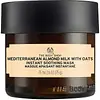What's inside
What's inside
 Key Ingredients
Key Ingredients

 Benefits
Benefits

 Concerns
Concerns

 Ingredients Side-by-side
Ingredients Side-by-side

Water
Skin ConditioningGlycerin
HumectantIsopropyl Palmitate
EmollientCetearyl Alcohol
EmollientCaprylic/Capric Triglyceride
MaskingOctyldodecanol
EmollientC12-15 Alkyl Benzoate
AntimicrobialGlyceryl Glucoside
HumectantCetearyl Isononanoate
EmollientSodium Hyaluronate
HumectantDecyl Glucoside
CleansingGlyceryl Stearate Se
EmulsifyingSodium Cetearyl Sulfate
CleansingCarbomer
Emulsion StabilisingSodium Citrate
BufferingCitric Acid
BufferingSodium Hydroxide
BufferingTrisodium EDTA
1,2-Hexanediol
Skin ConditioningPhenoxyethanol
PreservativePiroctone Olamine
PreservativePotassium Sorbate
PreservativeWater, Glycerin, Isopropyl Palmitate, Cetearyl Alcohol, Caprylic/Capric Triglyceride, Octyldodecanol, C12-15 Alkyl Benzoate, Glyceryl Glucoside, Cetearyl Isononanoate, Sodium Hyaluronate, Decyl Glucoside, Glyceryl Stearate Se, Sodium Cetearyl Sulfate, Carbomer, Sodium Citrate, Citric Acid, Sodium Hydroxide, Trisodium EDTA, 1,2-Hexanediol, Phenoxyethanol, Piroctone Olamine, Potassium Sorbate
Water
Skin ConditioningOlea Europaea Fruit Oil
MaskingGlycerin
HumectantPropanediol
SolventAvena Sativa Kernel Meal
AbrasiveCetearyl Alcohol
EmollientButyrospermum Parkii Butter
Skin ConditioningBetaine
HumectantLactobacillus Ferment Lysate
Skin ConditioningSodium Polyacrylate
AbsorbentCarrageenan
Benzyl Alcohol
PerfumingJojoba Esters
EmollientLevulinic Acid
PerfumingParfum
MaskingSodium Dehydroacetate
PreservativeSodium Stearoyl Glutamate
CleansingSodium Levulinate
Skin ConditioningTocopherol
AntioxidantBisabolol
MaskingAloe Barbadensis Leaf Juice Powder
Skin ConditioningTrisodium Ethylenediamine Disuccinate
Leuconostoc/Radish Root Ferment Filtrate
AntimicrobialCitric Acid
BufferingHelianthus Annuus Seed Oil
EmollientPrunus Amygdalus Dulcis Seed Extract
Skin ConditioningXanthan Gum
EmulsifyingSodium Hydroxide
BufferingDehydroacetic Acid
PreservativeWater, Olea Europaea Fruit Oil, Glycerin, Propanediol, Avena Sativa Kernel Meal, Cetearyl Alcohol, Butyrospermum Parkii Butter, Betaine, Lactobacillus Ferment Lysate, Sodium Polyacrylate, Carrageenan, Benzyl Alcohol, Jojoba Esters, Levulinic Acid, Parfum, Sodium Dehydroacetate, Sodium Stearoyl Glutamate, Sodium Levulinate, Tocopherol, Bisabolol, Aloe Barbadensis Leaf Juice Powder, Trisodium Ethylenediamine Disuccinate, Leuconostoc/Radish Root Ferment Filtrate, Citric Acid, Helianthus Annuus Seed Oil, Prunus Amygdalus Dulcis Seed Extract, Xanthan Gum, Sodium Hydroxide, Dehydroacetic Acid
Ingredients Explained
These ingredients are found in both products.
Ingredients higher up in an ingredient list are typically present in a larger amount.
Cetearyl alcohol is a mixture of two fatty alcohols: cetyl alcohol and stearyl alcohol. It is mainly used as an emulsifier. Emulsifiers help prevent the separation of oils and products. Due to its composition, it can also be used to thicken a product or help create foam.
Cetearyl alcohol is an emollient. Emollients help soothe and hydrate the skin by trapping moisture.
Studies show Cetearyl alcohol is non-toxic and non-irritating. The FDA allows products labeled "alcohol-free" to have fatty alcohols.
This ingredient is usually derived from plant oils such as palm, vegetable, or coconut oils. There is debate on whether this ingredient will cause acne.
Due to the fatty acid base, this ingredient may not be Malassezia folliculitis safe.
Learn more about Cetearyl AlcoholCitric Acid is an alpha hydroxy acid (AHA) naturally found in citrus fruits like oranges, lemons, and limes.
Like other AHAs, citric acid can exfoliate skin by breaking down the bonds that hold dead skin cells together. This helps reveal smoother and brighter skin underneath.
However, this exfoliating effect only happens at high concentrations (20%) which can be hard to find in cosmetic products.
Due to this, citric acid is usually included in small amounts as a pH adjuster. This helps keep products slightly more acidic and compatible with skin's natural pH.
In skincare formulas, citric acid can:
While it can provide some skin benefits, research shows lactic acid and glycolic acid are generally more effective and less irritating exfoliants.
Most citric acid used in skincare today is made by fermenting sugars (usually from molasses). This synthetic version is identical to the natural citrus form but easier to stabilize and use in formulations.
Read more about some other popular AHA's here:
Learn more about Citric AcidGlycerin is already naturally found in your skin. It helps moisturize and protect your skin.
A study from 2016 found glycerin to be more effective as a humectant than AHAs and hyaluronic acid.
As a humectant, it helps the skin stay hydrated by pulling moisture to your skin. The low molecular weight of glycerin allows it to pull moisture into the deeper layers of your skin.
Hydrated skin improves your skin barrier; Your skin barrier helps protect against irritants and bacteria.
Glycerin has also been found to have antimicrobial and antiviral properties. Due to these properties, glycerin is often used in wound and burn treatments.
In cosmetics, glycerin is usually derived from plants such as soybean or palm. However, it can also be sourced from animals, such as tallow or animal fat.
This ingredient is organic, colorless, odorless, and non-toxic.
Glycerin is the name for this ingredient in American English. British English uses Glycerol/Glycerine.
Learn more about GlycerinSodium Hydroxide is also known as lye or caustic soda. It is used to adjust the pH of products; many ingredients require a specific pH to be effective.
In small amounts, sodium hydroxide is considered safe to use. However, large amounts may cause chemical burns due to its high alkaline.
Your skin has a natural pH and acid mantle. This acid mantle helps prevent harmful bacteria from breaking through. The acid mantle also helps keep your skin hydrated.
"Alkaline" refers to a high pH level. A low pH level would be considered acidic.
Learn more about Sodium HydroxideWater. It's the most common cosmetic ingredient of all. You'll usually see it at the top of ingredient lists, meaning that it makes up the largest part of the product.
So why is it so popular? Water most often acts as a solvent - this means that it helps dissolve other ingredients into the formulation.
You'll also recognize water as that liquid we all need to stay alive. If you see this, drink a glass of water. Stay hydrated!
Learn more about Water